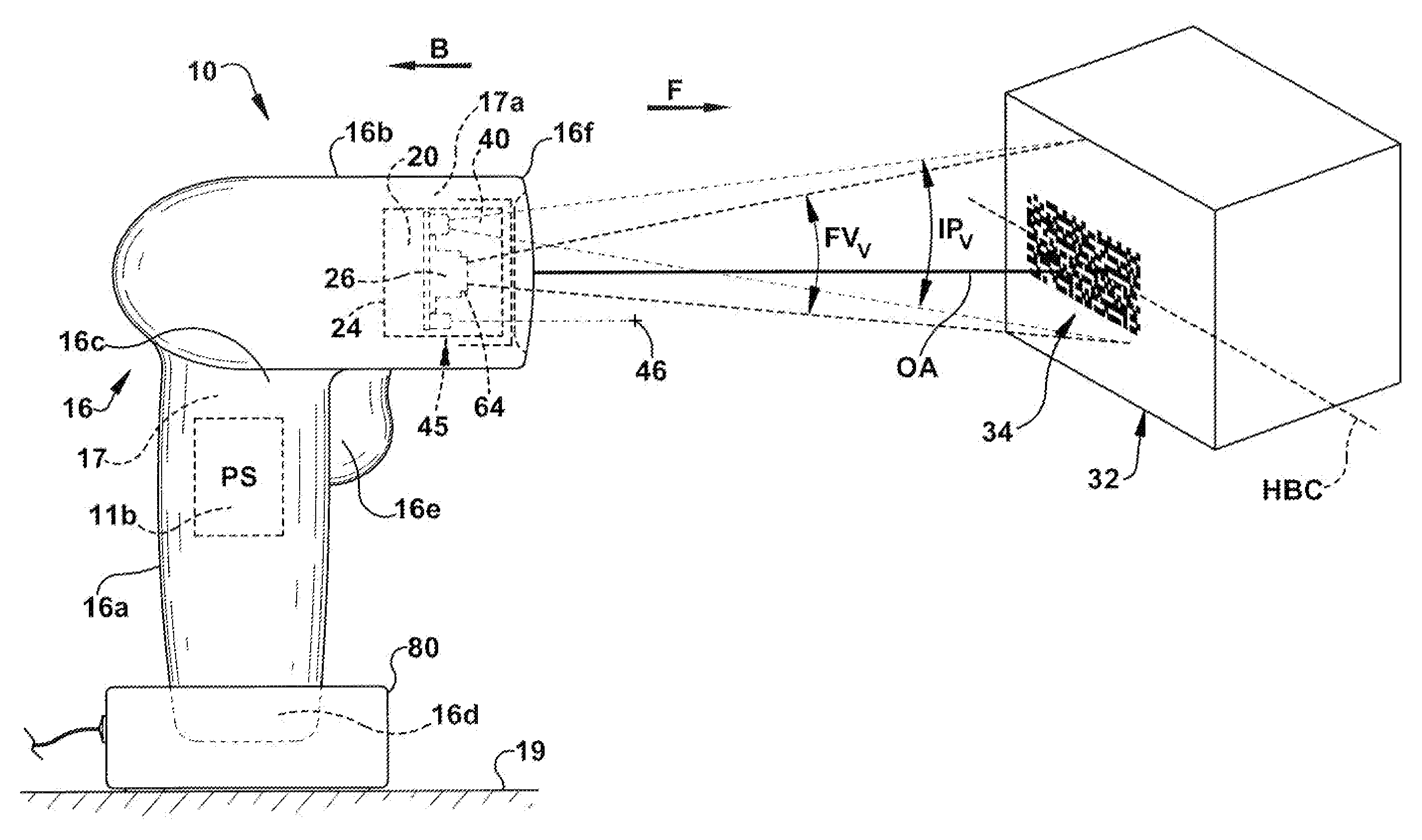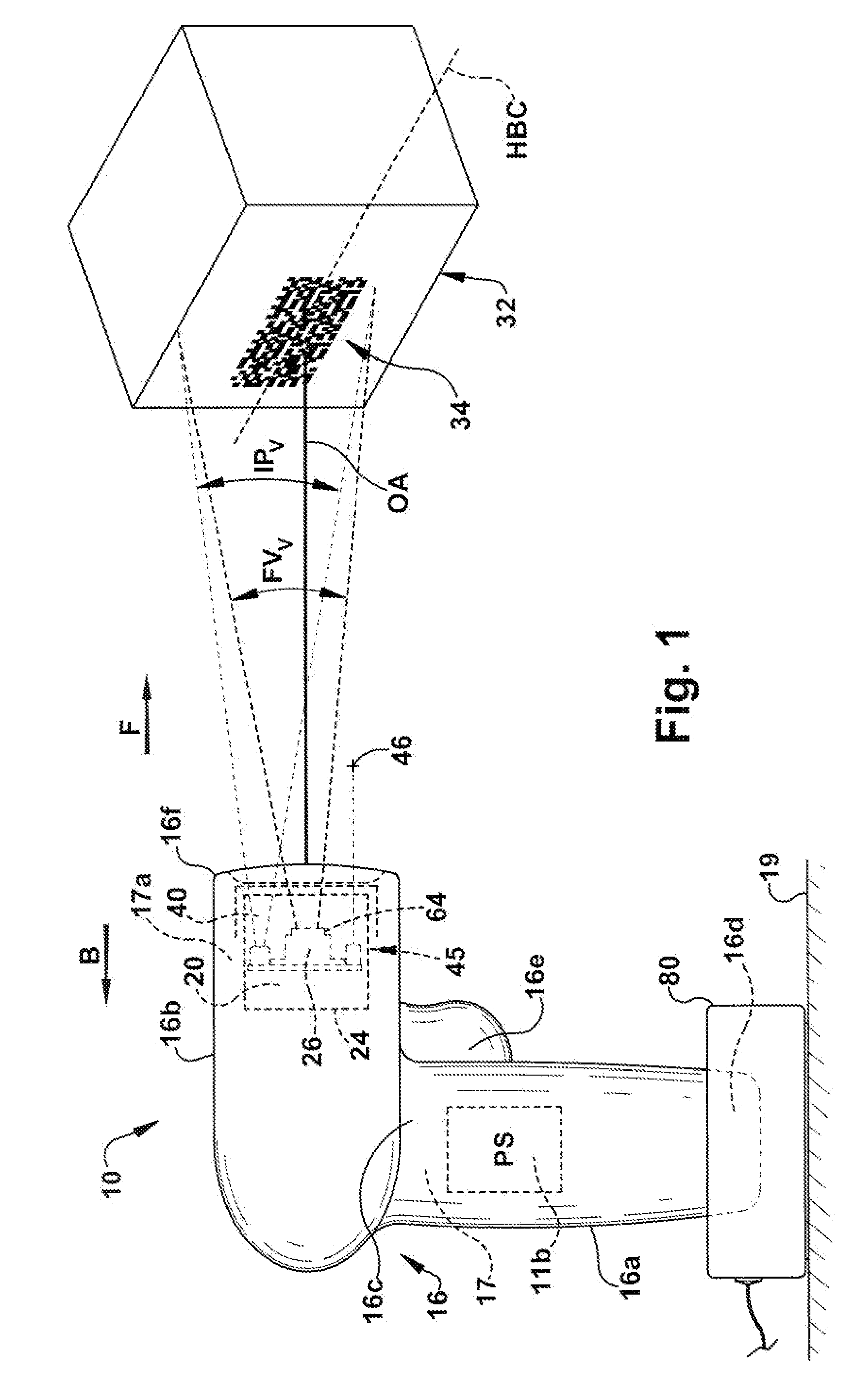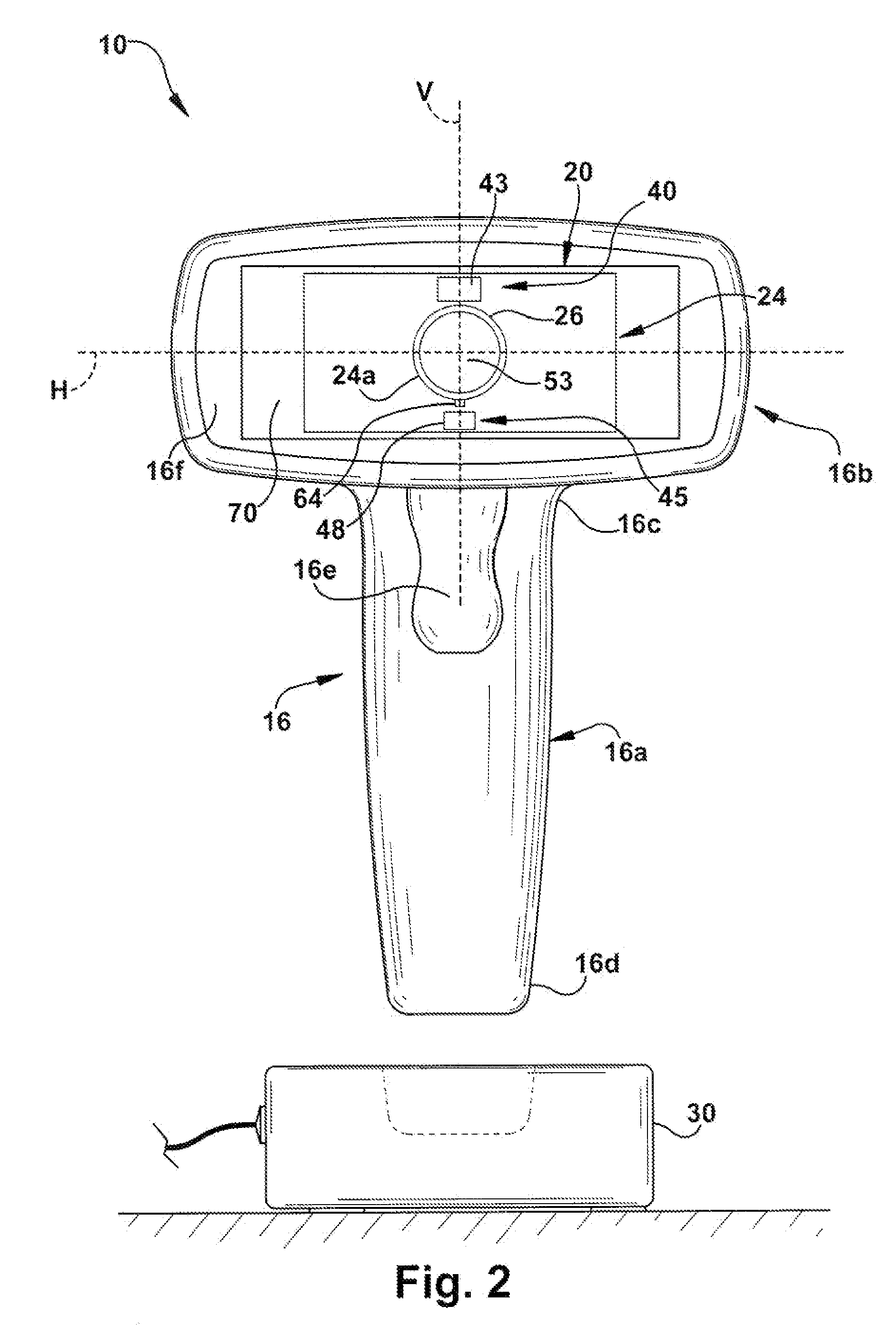Variable focus imaging lens assembly for an imaging-based bar code reader
a bar code reader and variable focus technology, applied in instruments, sensing record carriers, sensing by electromagnetic radiation, etc., can solve the problems of system perception as sluggish, poor resolution of imaged target bar codes, and difficult and costly implementation
- Summary
- Abstract
- Description
- Claims
- Application Information
AI Technical Summary
Benefits of technology
Problems solved by technology
Method used
Image
Examples
second exemplary embodiment
[0113]A second exemplary embodiment of the variable focus imaging lens assembly 50 of the present invention is shown schematically at 50 in FIG. 7. This embodiment is similar to the embodiment described above, but instead of the projection assembly having a single light source 64, the imaging projection assembly 62 utilizes a pair of illumination sources 64, 65. The light source 64 is projected by the window 70 such that a virtual image 64a of the light source 64 is focused at a predetermined position P1 within the field of view FV. As measured along the optic axis OA of the lens assembly 52, the virtual image 64a is at a distance D1 from the lens assembly 52, wherein D1=d11+d12. The distance d11 is a distance from the light source 64 to the window 70 and the distance d12 is a distance from the light source 64 to the predetermined position P1. Since the window 70 is a flat optic, d11=d12.
[0114]The illumination source 65 is projected by the window 70 such that a virtual image 65a of ...
third exemplary embodiment
[0121]A third preferred embodiment of the variable focus imaging lens assembly is shown schematically at 50 in FIG. 8. This embodiment is similar to the first embodiment described above, but the optic element 65 of the projection assembly 62 comprises two optic elements 66a, 66b. The first optic element 66a is the exit window 70, as described above, with respect to the first embodiment. The second optic element 66b comprise one or more projection lenses which function to position the virtual image 64a of the light source 64 at a desired predetermined position P within the field of view FV at a distance D. In the first embodiment, because the flat exit window 70 has an optical power of one, in order to focus or projection the image projection at the distance D from the lens assembly 52 with respect to the optical axis OA, it was necessary to have the light source 64 a distance d1=½ D from the exit window 70 such that D=d1+d2 where d1=d2, as illustrated in FIG. 6.
[0122]Because the pro...
fourth exemplary embodiment
[0124]A fourth exemplary embodiment of the variable focus imaging lens assembly 50 of the present invention is shown schematically at 50 in FIG. 9. This embodiment is similar to the first embodiment described above; however, instead of a mechanical moving lens 53, a liquid lens 153 is utilized as the variable focus optic element of the lens assembly 52. It should be recognized, of course, that the liquid lens 153 may equally well be used in place of a mechanical moving lens in the configurations shown in the second, third, and fourth embodiments.
[0125]The lens assembly 52 includes a stationary lens assembly 54, that for illustrative purposes only comprise a set of fixed position lenses 54a, 54b, 54c, 54d and an aperture stop 54c at the front of the assembly 54. The stationary lens assembly 54 is supported in lens holders 55a, 55b. Affixed to a front distal portion of the inner support 55b is the liquid lens 55b.
[0126]The liquid lens 153 is an optic lens formed by two liquids 153a, ...
PUM
 Login to View More
Login to View More Abstract
Description
Claims
Application Information
 Login to View More
Login to View More - R&D
- Intellectual Property
- Life Sciences
- Materials
- Tech Scout
- Unparalleled Data Quality
- Higher Quality Content
- 60% Fewer Hallucinations
Browse by: Latest US Patents, China's latest patents, Technical Efficacy Thesaurus, Application Domain, Technology Topic, Popular Technical Reports.
© 2025 PatSnap. All rights reserved.Legal|Privacy policy|Modern Slavery Act Transparency Statement|Sitemap|About US| Contact US: help@patsnap.com



